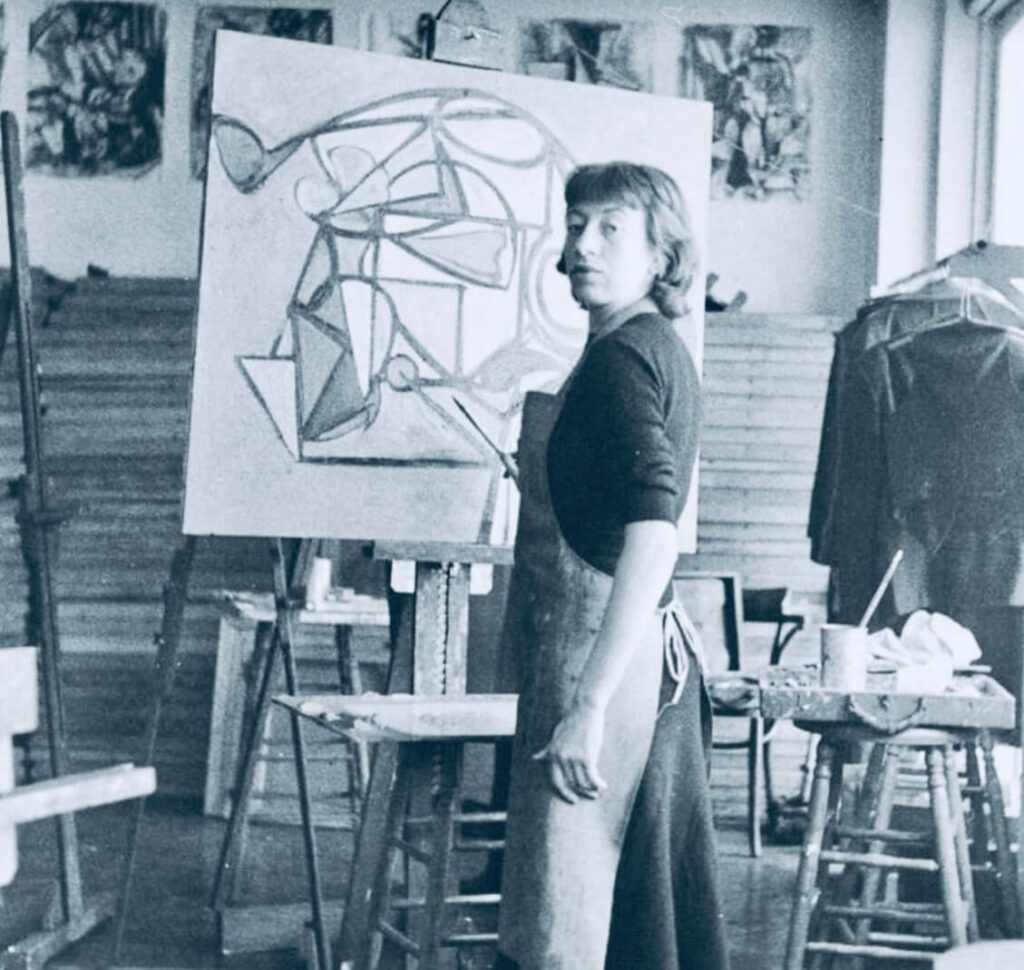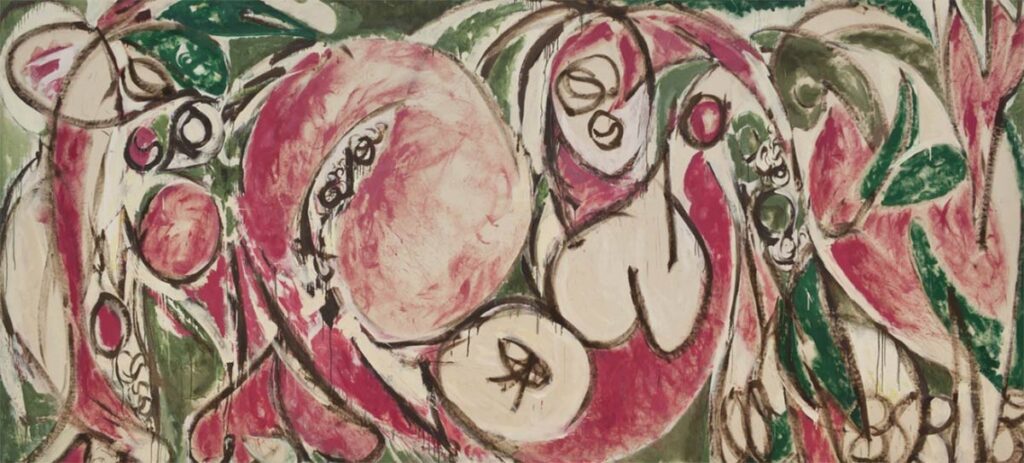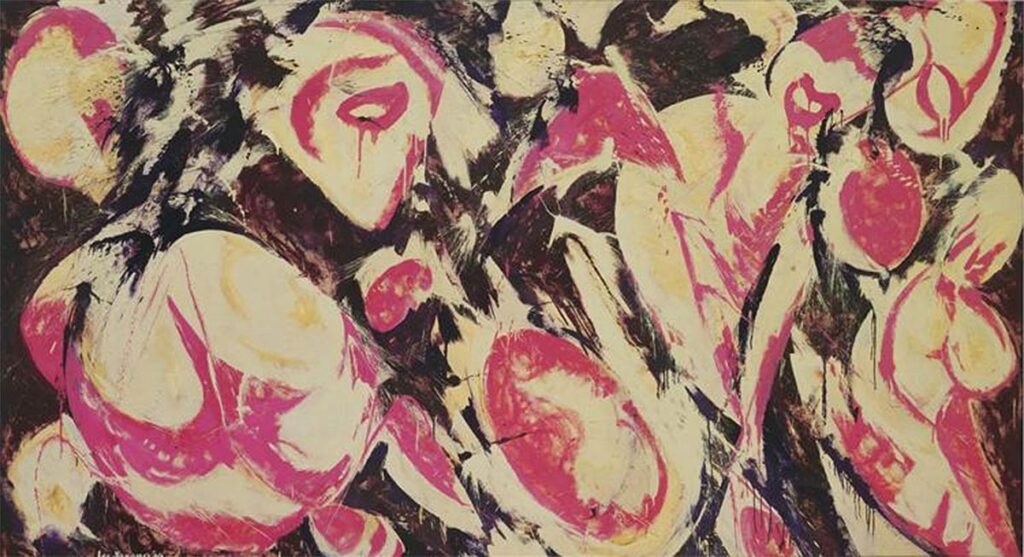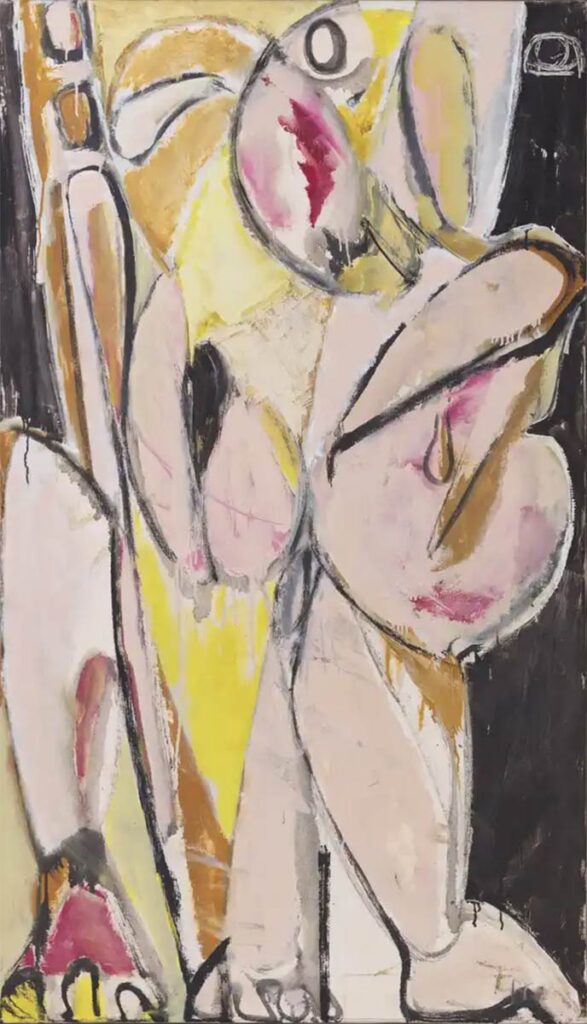Lee Krasner
Lee Krasner was a pioneering American artist whose contributions to Abstract Expressionism are only recently being fully recognized. Throughout her career, she navigated the challenges of being a female artist in a male-dominated field and developed a unique and evolving artistic style that left a lasting impact on modern art.

Early Life and Education
Born Lena Krassner on October 27, 1908, in Brooklyn, New York, Krasner was the daughter of Russian Jewish immigrants. Her early interest in art led her to attend The Cooper Union, the National Academy of Design, and later, the Hans Hofmann School of Fine Arts, where she was exposed to European modernism and the principles of abstraction.
During the 1930s, Krasner worked on several public art projects under the Works Progress Administration (WPA) Federal Art Project, which provided her with valuable experience and exposure to other modernist artists. Her early works were influenced by Cubism and the geometric abstraction of artists like Piet Mondrian.
Meeting Jackson Pollock and the Influence of Marriage
In 1941, Krasner met Jackson Pollock, a fellow artist who would become her husband and a central figure in her life. The couple married in 1945 and moved to Springs, East Hampton, where they both established studios. Living and working alongside Pollock had a profound impact on Krasner’s artistic development, though it also meant her work was often overshadowed by her husband’s towering presence in the art world.
Despite these challenges, Krasner continued to develop her own distinctive voice. Her work during this period began to reflect the influence of Pollock’s gestural abstraction, but she maintained her unique approach, characterized by a rigorous formalism and an exploration of color and form.
Artistic Evolution and Major Works
Krasner’s career can be divided into several distinct phases, each marked by significant stylistic developments. Her work consistently evolved, reflecting her relentless experimentation and refusal to be confined to a single style.
1. “The Seasons” (1957)
“The Seasons” is one of Krasner’s most celebrated works, representing a significant departure from her earlier, more structured compositions. Created during a period of intense personal and artistic transformation following Pollock’s death in 1956, this painting is characterized by its vibrant colors, dynamic forms, and organic shapes.
The painting’s swirling, energetic lines and bold use of color convey a sense of renewal and regeneration. “The Seasons” exemplifies Krasner’s ability to translate her emotional experiences into powerful visual statements, and it remains one of her most iconic works.

2. “Gaea” (1966)
“Gaea” is another notable work that showcases Krasner’s mature style. Named after the Greek goddess of the earth, the painting is a testament to her deep connection with nature and the natural world. The composition features bold, curvilinear forms and a rich, earthy palette, creating a sense of movement and vitality.
Krasner’s use of color and form in “Gaea” reflects her interest in the rhythms and cycles of nature. The painting’s organic shapes and dynamic lines evoke the sense of growth and transformation, highlighting her continued exploration of abstract forms and their expressive potential.

3. “Prophecy” (1956)
“Prophecy” is a series of paintings created during a particularly tumultuous period in Krasner’s life. These works are marked by their raw emotional intensity and bold, gestural brushstrokes. The series reflects Krasner’s response to personal loss and her ongoing struggle to assert her own artistic identity.
The “Prophecy” paintings are characterized by their dramatic compositions and powerful use of color. The gestural marks and dynamic forms convey a sense of urgency and emotional depth, capturing Krasner’s intense inner experiences. This series is considered one of her most significant contributions to Abstract Expressionism.

Techniques and Innovations
Krasner’s approach to painting was characterized by her relentless experimentation and commitment to formal rigor. She often reworked and repurposed her own canvases, cutting them up and incorporating the pieces into new compositions. This process-oriented approach allowed her to continuously evolve her work, reflecting her dynamic and ever-changing artistic vision.
Krasner was also known for her innovative use of color and form. Her compositions often featured bold, gestural brushstrokes and a rich, vibrant palette. She was particularly interested in the expressive potential of color and its ability to convey emotional and psychological depth.
Recognition and Legacy
Despite her significant contributions to Abstract Expressionism, Krasner’s work was often overshadowed by that of her husband, Jackson Pollock. However, in recent years, there has been a growing recognition of her achievements and her role as a pioneering figure in modern art.
Krasner’s work is now featured in major museums and collections around the world, including the Museum of Modern Art in New York, the Whitney Museum of American Art, and the Tate Modern in London. Her influence can be seen in the work of contemporary artists who continue to explore the expressive potential of abstraction.
Personal Life and Challenges
Krasner’s personal life was marked by both triumphs and struggles. Her marriage to Pollock was both a source of inspiration and a significant challenge. Pollock’s struggles with alcoholism and their turbulent relationship created a difficult environment for Krasner, yet she remained committed to her own artistic vision.
Following Pollock’s death in a car accident in 1956, Krasner faced the challenge of navigating her grief and reestablishing her identity as an artist in her own right. This period of personal transformation was reflected in her work, which became increasingly bold and experimental.
Later Years and Continued Impact
In the later years of her career, Krasner continued to push the boundaries of abstraction, exploring new techniques and forms. Her work from this period is characterized by its bold use of color and dynamic compositions, reflecting her ongoing commitment to innovation and experimentation.
Krasner remained active in the art world until her death in 1984. Her legacy as a pioneering artist and a key figure in Abstract Expressionism continues to be celebrated, and her work remains a vital part of the history of modern art.
Conclusion
Lee Krasner was a trailblazing artist whose contributions to Abstract Expressionism have left an indelible mark on modern art. Through her most notable works, such as “The Seasons,” “Gaea,” and “Prophecy,” Krasner explored the expressive potential of color and form, creating powerful and emotive compositions that continue to inspire and challenge viewers. Her legacy as a pioneering female artist and a key figure in the Abstract Expressionist movement endures, leaving a lasting impact on the art world.



